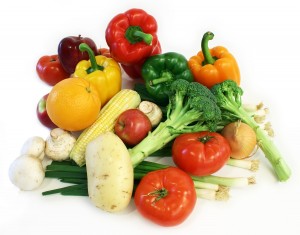
A calorie is a calorie . . . right? This is the mantra of many of the highly publicized diets on the market from the proponents of the high-carb/low-fat diet to the high-protein diets. This simple concept has been used to convince us that the latest diet fad is the end-all solution to the obesity epidemic. And in the end, “all calories are equal” is used in defense of eating something that we all know is a bad choice, like eating a whole bag of Double Stuffed Oreos or a meat-only diet . . . both of which are my favorites. The argument is that you can’t gain weight if you pig out on Oreos or bacon but don’t eat more than 1,200 calories in a day . . . right? Wrong! All calories are not created equal.
The notion that all calories are equal does not take into consideration the existence of insulin resistance, which is the inability of your body to effectively process sugary foods over time. When you were young your muscles were able to process 85–90 percent of the calories from any meal and process it into energy.
Studies have shown that when blood glucose or blood sugar rises rapidly, as it may after a sugary meal, many people don’t think as quickly as they normally do and they make more mistakes. Many times they become more anxious while having less energy when their blood sugar is high. People that ride this blood-sugar roller coaster often have an increased risk of heart disease, stroke, kidney disease and other diabetes complications. This is also known as insulin resistance.
After years of nutritional abuse, the body begins an abnormal metabolic state and the muscles become insulin resistant due to eating high-sugar or high-glycemic foods; many of the calories consumed cannot be converted into energy and are turned into belly fat. In fact the body begins to hold onto fat like a sponge holds onto water. To lose weight, it takes more than cutting 3,500 calories out of your diet to lose a pound of fat. What a person can get away with when they are young will finally catch up with them when they grow older. As college students that same abuse came with a huge price: the “freshman 20” and “sophomore 30.” But, it is worse as we get older.
So what does this mean? You need to look at what you are eating on a regular basis and look at how your body reacts to that food. If I were to tell you that you should eat multiple tablespoons of sugar at every meal, I would guess that many of you would smile, but then you would think that I had lost my mind. Well, in fact, many of you are eating foods that are just as bad. No, I am not arguing for a low-carb/high-protein diet. Nor am I arguing for a high-carb/low-fat diet. I educate my clients that we have to look at how the body reacts to each food and then decide if it is a good or bad choice for you.
So how should you evaluate your diet? One of the easiest ways is to look at how your body reacts to each food by evaluating the glycemic index of the food you are eating. To put it differently, does that food spike your blood sugar?
The glycemic index was designed to help people with diabetes control their blood sugar levels, but can be used to help people maintain a healthy lifestyle and a healthy weight. It can seem a little complicated, but here’s the basic idea: some foods, like white bread, cookies and white potatoes, make your blood sugar rise quickly. So to lose weight and feel better, you want to eat carbs that produce a steadier rise in blood sugar vs. a spike up; and the fiber in those foods helps you feel full longer so you’re not as hungry, and you feel more satisfied.
There are several studies that demonstrated that people on a low-glycemic diet lost more fat than those on a high-glycemic diet with the same calories. So here are the basics: foods on the glycemic index diet are scored on a scale of 0 to 100 based on how much they raise your blood sugar level.
• High-GI foods (70 or higher): white rice, white bread, pretzels, white bagels, white baked potatoes, crackers, sugar-sweetened beverages, and even some foods that are seen as “healthy” such as watermelon, processed wheat bread and popcorn.
• Medium-GI foods (56-69): bananas, grapes, spaghetti, ice cream, raisins, corn on the cob
• Low-GI foods (55 and under): oatmeal, peanuts, peas, carrots, kidney beans, hummus, skim milk, most fruits (except those listed above and watermelon)
To gain better health and live a more productive life, you just need to eat more low-glycemic foods and fewer high-glycemic foods in addition to watching your overall calorie intake. In contradiction of the low-carb fad, you also don’t need to cut out all carbs. You do need to be selective about your carbs, checking the glycemic index value of the foods you eat. This means you can shop and cook like you normally would, but you need to use ingredients that are low on the index. So, before you decide on the next fad diet, look at the logic behind it. If the mantra is more of the same “all calories are equal,” you now know better. Stay tuned for the next issue’s installment, when I discuss cravings and how to stay on track when that mocha java is calling your name.













